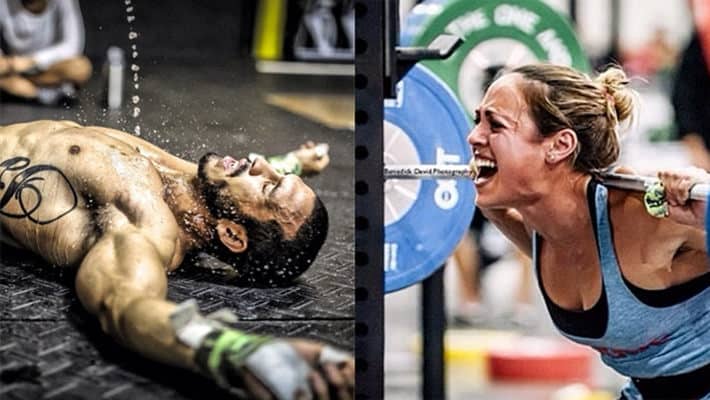Is Crossfit effective in improving physical condition and weight loss? Is it a safe sport modality? Is there a higher risk of injury than in other sport activities? Is there evidence about its programs? What is the role of the instructor? In this article called Crossfit Injuries we will answer all these questions.
Crossfit training programs emerged on February 19, 2001 by Greg and Lauren Glassman. Both proposed through the internet, a “routine for the day” with two exercises, one cardiovascular (rowing) and one strength-power (hang clean).
These exercises were performed with a progressive decrease in time and repetitions respectively, with a constant load.
Shortly thereafter, the website had thousands of daily visitors, and today it has become a modality practiced by thousands of people around the world (1).
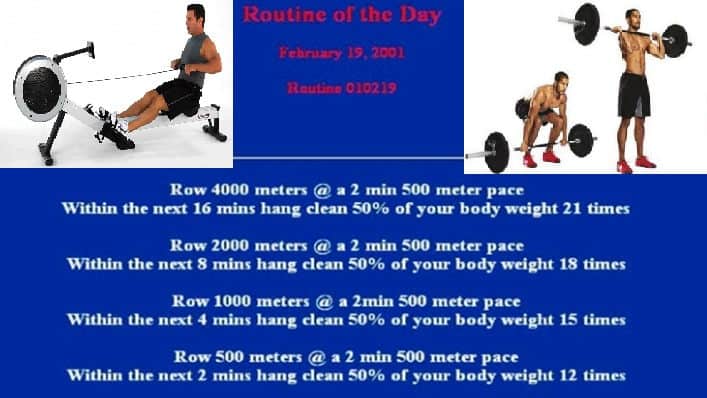
What is Crossfit?
Crossfit is a sports modality that is based on performing exercises at very high intensity with high muscle participation, where the load is medium-high, there is minimal rest between exercises, a high speed of execution and repetitions approaching failure, all in sessions with a high volume of work.
Among the exercises performed in training sessions are cardiovascular exercises (rowing, running, jumping, etc.), Olympic movements (hang clean, snatch, jerks, etc.), power-lifting (squat, dead weight, bench press, shoulder press), with one’s own body weight(push-ups, burpees, lunges, pull-ups, etc.) or with other rudimentary implements (giant tires, bags, sleds, etc.), which are organized in a circular form or by grouping exercises (2).
Until Glassman’s proposal, this type of training was practically exclusive to military training or high performance athletes in Olympic sports, but today Crossfit brings it closer to the average user of any sports center, which aims to improve their physical condition, increase their strength, power or change their body composition.
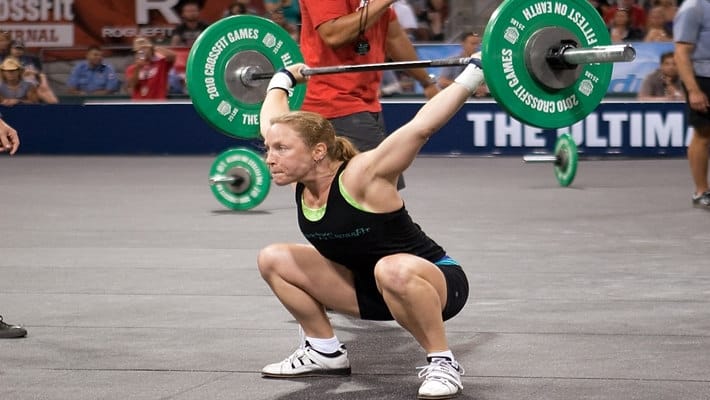
Crossfit, fitness and body composition
Reviewing the literature, we observe different studies that address the benefits generated by the practice of Crossfit.
Smith and collaborators in a study with 23 men and 20 women, analyzed the changes in body composition and physical condition after 10 weeks of training with the following results (3).
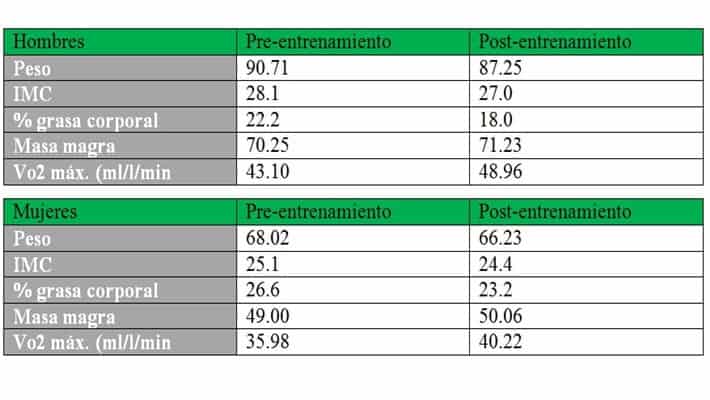
.
* Average values are reflected in the tables.
In this study, all measurement variables were significantly modified, showing Crossfit effective in improving body composition, with a decrease in % fat, increase in lean mass and an improvement in physical fitness
This other study conducted on soldiers from the USA indicates that the Crossfit program is satisfactory for improving physical condition, possibly due to the variety of stimuli produced by its training (4).
Babish showed after the application of two Crossfit programs, similar improvements in both men and women mainly due to the fact that Crossfit is a model based on HIIT, which had already been shown to be effective in improving parameters such as VO2 max (5).
This study (6) conducted on 96 adolescents shows improvements in physical fitness and muscle strength after an 8-week intervention, with two 60-minute sessions per week.
In addition, Crossfit shows a greater increase in physical condition than a traditional strength training program (7), improving all parameters in different fitness level measurement tests, except maximum strength (8).
There seems to be clear evidence of the benefits of Crossfit programs, but doubts have also begun to emerge after different studies on the safety of Crossfit.
How much do you know about crossfit?
Here is a little quiz about crossfit for you to test your knowledge. It will only take you 1 minute, it is very fun and educational and you will get a free gift at the end.
Crossfit Injuries
Below we analyze crossfit injuries according to current scientific evidence.
Studies defending NO Crossfit Injuries
Few studies have analyzed the frequency and type of crossfit injuries that occur in its conditioning programs, mainly due to their recent appearance.
This study (9) conducted a survey of 132 Crossfit practitioners, of which 73.5% reported having a sustained injury during training, i.e. 3.1 injuries per 1000 hours of training, mainly in shoulders and spine.
Compared to other sports, the injury rate in crossfit is similar to that occurring in Olympic weightlifting (2-4/1000hs), Olympic wrestling (2-9.6/1000hs), volleyball (1.7-3.8/1000hs), gymnastics (0.5-5.3/1000hs), and lower than team sports such as soccer (10-35/1000 hs) (10) or running (2.5-12.1) (11).
Another study (12) conducted on soldiers compared the implementation of Crossfit to a training program, compared to a control group that performed high intensity training.
The results concluded that the implementation of such a program does not increase the risk of injury , while long distance running, sedentary lifestyle or smoking are risk factors.
Other studies show traumatic crossfit injuries such as retinal detachment (13), carotid artery dissections (14), and rhabdomyolysis (15), but in no case have they been generalized, being punctual.
An article has recently been published in 2020 advocating that crossfit appears to be a suitable training program for different age groups when performed in a safe environment and with the assistance of qualified professionals (26).
Studies on Crossfit injuries
Although Hak et al. did not find a higher rate of injury in Crossfit than in other sports, they did note that most occurred in shoulders and lower back.
Of note, 16% of subjects in Smith’s study (3) dropped out due to overuse injuries, while in this study (16) 20% and in this study (24) 25%, both for the same reason.
This may be because movements such as the overhead squat, jerk or squat snatch generate great stress on the shoulder joint caused by maximum ranges of flexion, external rotation and abduction, as well as a great overload on the lumbar spine (9).
Some exercises have been harshly criticized during the Crossfit Games in the USA by health and sports professionals.
This is the case of GHD ball toss, an exercise that involves maximum flexion-extension of the spine repeatedly performed at maximum speed, which involves an extreme risk that can generate a multitude of spinal injuries (see McGill’s keys in this article).
But the selection of exercises is not the only variable that can affect the occurrence of injuries in crossfit. The load, speed of execution, volume and density are variables that must be assessed.
One of the characteristic aspects of Crossfit is the high perception of fatigue of users at the end of the Wod (work of day).
There is evidence that fatigue alters the biomechanics of movement (17-23), and if we add to this the technical complexity of Crossfit exercises , the high speed and the high volume of repetitions, the risk of injury can be very high.
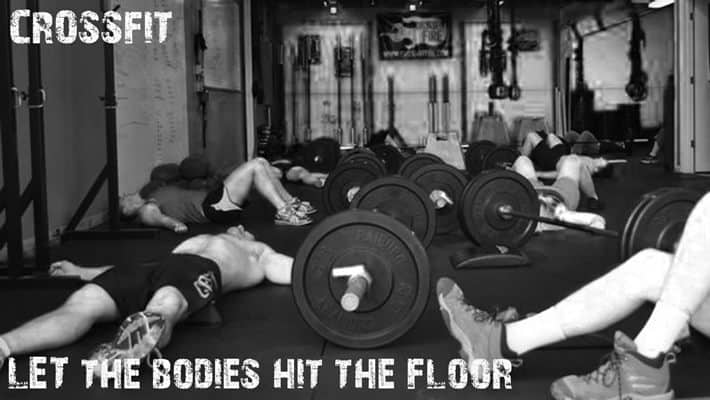
Another important aspect that can influence the injury rate in crossfit, is the metabolic orientation of its sessions, with an apparently random order and that together with a lack of base strength training that generates a solid, stable and balanced structure to be able to train high intensity with high volume, can contribute to the appearance of joint alterations (24).
Crossfit Based on evidence?
Crossfit founder G. Glassman argues that “the methodology that drives CrossFit is entirely empirical, relying on full disclosure of methods, results and critiques, and has employed the Internet to support these values.
CrossFit is empirically driven, clinically tested, and developed by the community of practitioners themselves” (2).
But Crossfit programs leave some unknowns that do not match the current evidence.
This is the case of its rigid pre-established programs, the randomness in the combinations during sessions and microcycles, the rotational distribution of its three types of exercises, the absence of intermediate structures and the long-term periodization and programming.
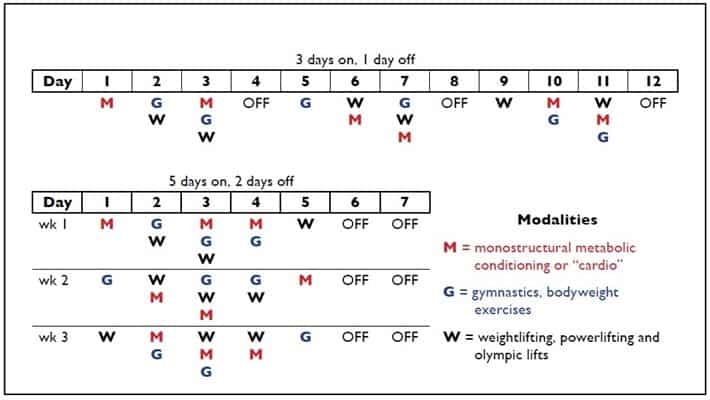
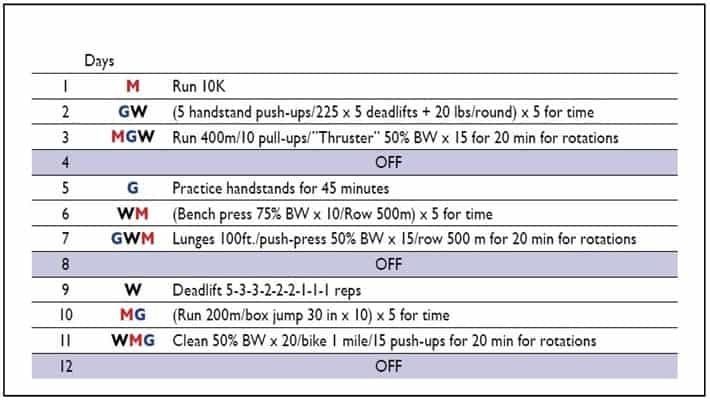
.
Crossfit instructors and injuries
Finally highlight the importance of the instructor when talking about injuries in crossfit.
The instructor seems to be a key aspect of the instructor-student ratio, since a high number of practitioners limits the individualization necessary in any complex sports practice (25).
The variety offered in Crossfit centers and those that perform the same type of activity under a similar name is very wide, since their training is very varied or in some cases non-existent.
Basing the application of the model, from the empiricism of the bases of strength, power and endurance training in the best of cases to the own experience, improvisation or the recommendations of the sports center.
Conclusions on crossfit injuries
The analysis of this type of training based on HIPT (high intensity power training) indicates that the Crossfit model is effective in changing body composition and improving physical condition where fitness level increases and fat tissue decreases.
This meta-analysis (26) indicates how the application of HIIT programs produces the above effects in the same way, which indicates that it is the high intervallic intensity that generates these benefits, which Crossfit integrates in its conditioning programs.
Regarding the injury rate in Crossfit, it does not have high values compared to other sports, but there is uncertainty about the effect of injuries in Crossfit in the long term due to its recent implementation and the severity of overuse of these.
The number of injury-related withdrawals in Crossfit in different studies is around 20%, where the shoulder joint and the lumbo-pelvic region are the ones with the highest injury rate, which may be mainly due to fatigue, the speed of execution and the type of movements without previous basic adaptation.
Finally, to highlight the unknown of the absence of essential factors in any training program and the role of the instructor in reducing the injury rate in Crossfit and improving training conditions.
Bibliographic references
- Glassman, G. (2005). What is crossfit.Retrieved September 7, 2015 from: http://www. crossfit. com/cf-info/what-crossfit.
- Peña G., Heredia J.R., Aguilera J. (2015). Crossfit and incidence of crossfit injuries. Retrieved September 7, 2015 from: http://g-se.com/es/salud-y-fitness/blog/crossfit-r-e-indicencia-de-lesiones
- Smith, M. M., Sommer, A. J., Starkoff, B. E., & Devor, S. T. (2013). Crossfit-based high-intensity power training improves maximal aerobic fitness and body composition. The Journal of Strength & Conditioning Research, 27(11), 3159-3172.
- Paine J, Uptgraft J, Wylie R. CrossFit study. Comm Gen Staff College. 2010:1-34.
- Babiash PE. Determining The Energy Expenditure and Relative Intensity of Two CrossFit Workouts[master’s thesis]. La Crosse: University of Wisconsin – La Crosse; 2013.
- Eather N, Morgan PJ, Lubans DR. Improving health-related fitness in adolescents: the CrossFit Teens™ randomised controlled trial. J Sports Sci. 2015;14:1-15.
- Patel, P. (2012). The influence of a crossfit exercise intervention on glucose control in overweight and obese adults (Doctoral dissertation, Kansas State University).
- Gerhart, H. D. (2013). A comparison of crossfit training to traditional anaerobic resistance training in terms of selected fitness domains representative of overall athletic performance (Doctoral dissertation, Indiana University of Pennsylvania).
- Hak, P. T., Hodzovic, E., & Hickey, B. (2013). The nature and prevalence of injury during CrossFit training. Journal of strength and conditioning research/National Strength & Conditioning Association.
- Caine, D. J., Harmer, P., & Schiff, M. (Eds.). (2009). The Encyclopaedia of Sports Medicine: An IOC Medical Commission Publication, Epidemiology of Injury in Olympic Sports (Vol. 16).
- John Wiley & Sons. Van Mechelen, W. (1992). Running injuries. Sports Medicine, 14(5), 320-335.
- Grier, T., Canham-Chervak, M., McNulty, V., & Jones, B. H. (2013). Extreme conditioning programs and injury risk in a US Army brigade combat team. US Army Med Dep J, 36-47.
- Joondeph, S. A., & Joondeph, B. C. (2013). Retinal detachment due to crossfit training injury. Case reports in ophthalmological medicine, 2013.
- Lu, A., Shen, P., Lee, P., Dahlin, B., Waldau, B., Nidecker, A. E., … & Bobinski, M. (2015). CrossFit-related cervical internal carotid artery dissection.Emergency radiology, 1-4.
- Moeckel-Cole, S. A., & Clarkson, P. M. (2009). Rhabdomyolysis in a collegiate football player. The Journal of Strength & Conditioning Research, 23(4), 1055-1059.
- Weisenthal, B. M., Beck, C. A., Maloney, M. D., DeHaven, K. E., & Giordano, B. D. Injury Rate and Patterns Among CrossFit Athletes. OrthopaedicJ Sports Med, 2014;2(4).
- Hooper, D. R., Szivak, T. K., Comstock, B. A., Dunn-Lewis, C., Apicella, J. M., Kelly, N. A., … & Kraemer, W. J. (2014). Effects of fatigue from resistance training on barbell back squat biomechanics. The Journal of Strength & Conditioning Research, 28(4), 1127-1134.
- Hooper, D. R., Szivak, T. K., DiStefano, L. J., Comstock, B. A., Dunn-Lewis, C., Apicella, J. M., … & Kraemer, W. J. (2013). Effects of resistance training fatigue on joint biomechanics. The Journal of Strength & Conditioning Research, 27(1), 146-153.
- Ortiz, A., Olson, S. L., Etnyre, B., Trudelle-Jackson, E. E., Bartlett, W., & Venegas-Rios, H. L. (2010). Fatigue effects on knee joint stability during two jump tasks in women. Journal of strength and conditioning research/National Strength & Conditioning Association, 24(4), 1019.
- Liederbach, M., Kremenic, I. J., Orishimo, K. F., Pappas, E., & Hagins, M. (2014). Comparison of Landing Biomechanics Between Male and Female Dancers and Athletes, Part 2 Influence of Fatigue and Implications for Anterior Cruciate Ligament Injury. The American journal of sports medicine, 42(5), 1089-1095.
- Cortes, N., Greska, E., Kollock, R., Ambegaonkar, J., & Onate, J. A. (2013). Changes in lower extremity biomechanics due to a short-term fatigue protocol.Journal of athletic training, 48(3), 306.
- Murdock, G. H., & Hubley-Kozey, C. L. (2012). Effect of a high intensity quadriceps fatigue protocol on knee joint mechanics and muscle activation during gait in young adults. European journal of applied physiology, 112(2), 439-449.
- Karg, M., Venture, G., Hoey, J., & Kulic, D. (2014). Human movement analysis as a measure for fatigue: A hidden Markov-based approach. Neural Systems and Rehabilitation Engineering, IEEE Transactions on, 22(3), 470-481.
- Añon, P. (2013). The nature and prevalence of injury in Crossfit. Retrieved September 9, 2015 from http://g-se.com/es/salud-y-fitness/blog/la-naturaleza-y-la-prevalencia-de-las-lesiones-durante-el-entrenamiento-de-crossfit.
- Montalvo AM, Hardison T, Shanstrom N (2015). Injury epidemiology and risk factors for injury in Crossfit: a pilot study. Southeast Athletic Trainer’s Association Clinical Symposium, Atlanta, GA.
- Costigan, S. A., Eather, N., Plotnikoff, R. C., Taaffe, D. R., & Lubans, D. R. (2015). High-intensity interval training for improving health-related fitness in adolescents: a systematic review and meta-analysis. British journal of sports medicine, bjsports-2014.
- Santos da Costa, et. al (2020).CrossFit®: Injury prevalence and main risk factors. Clinics (Sao Paulo). Nov 25;74:e1402.
